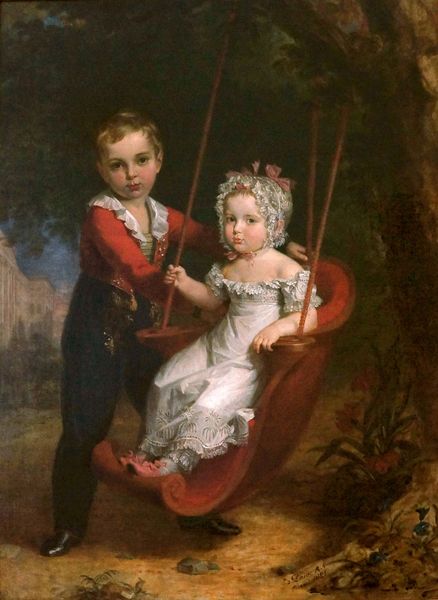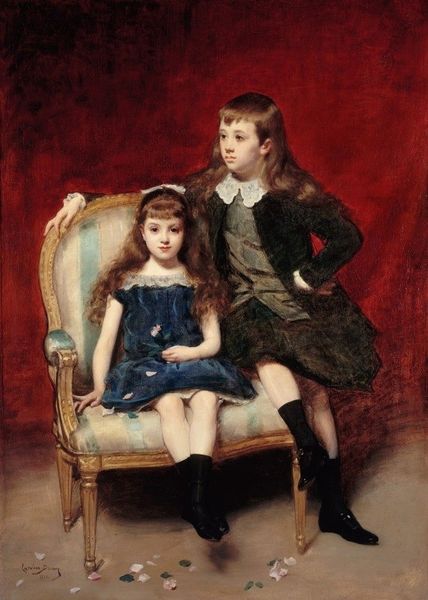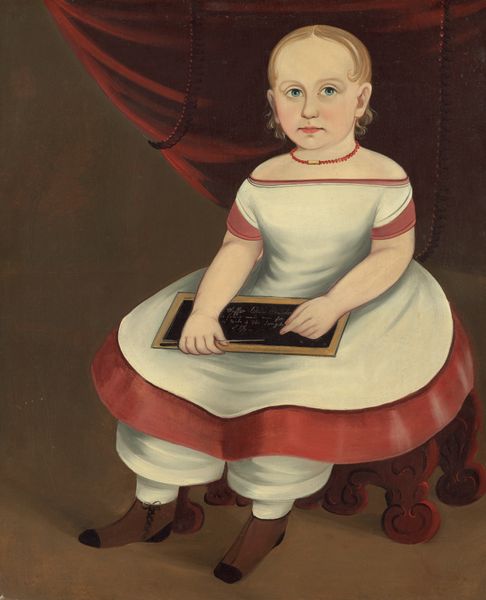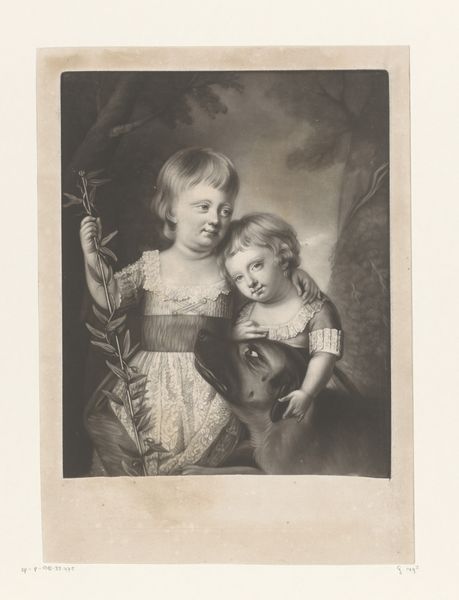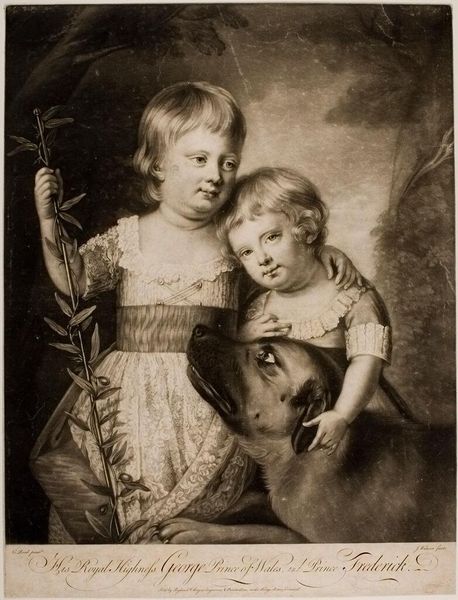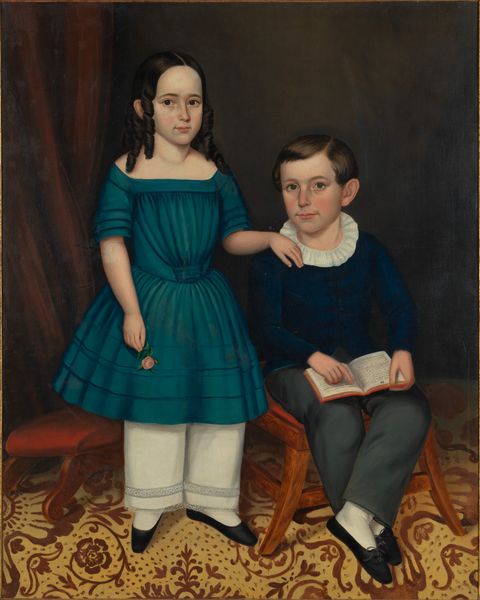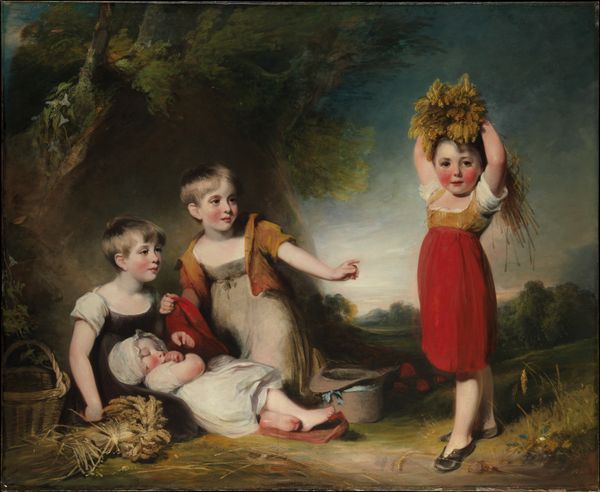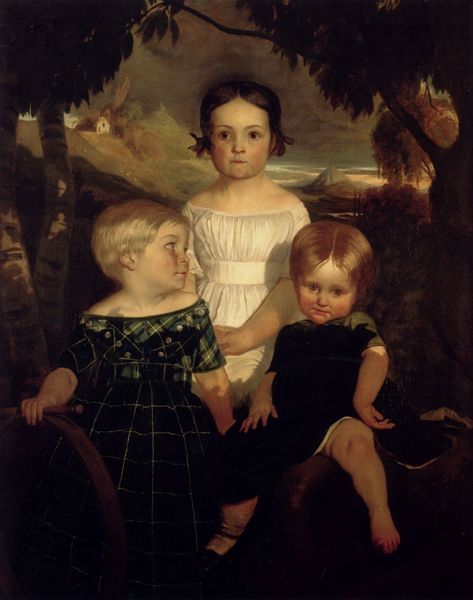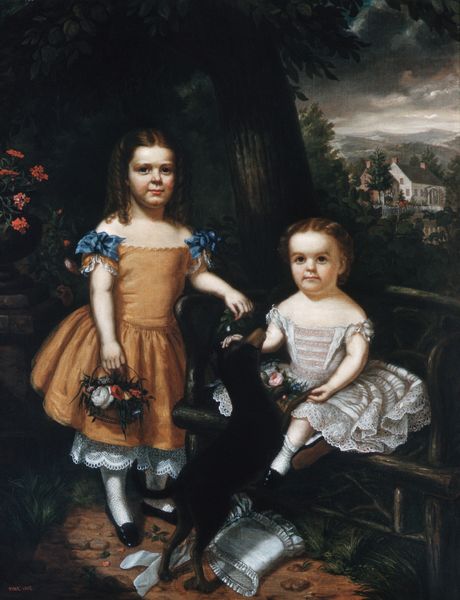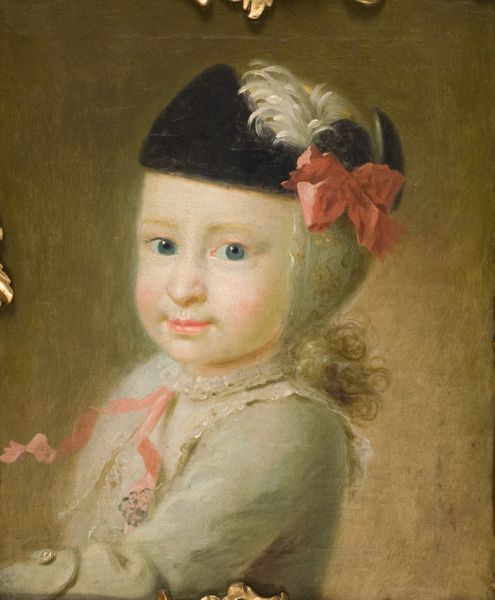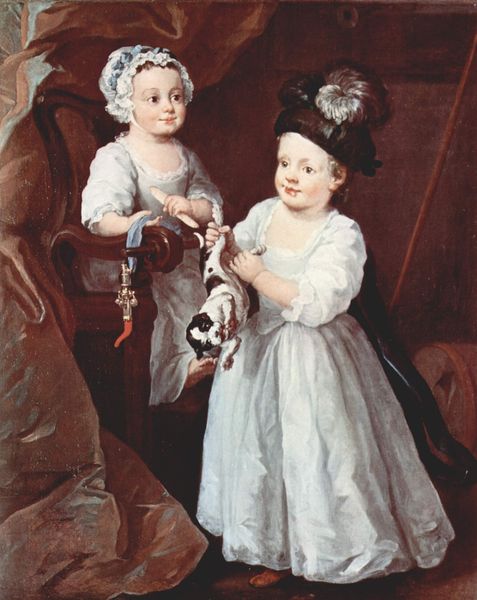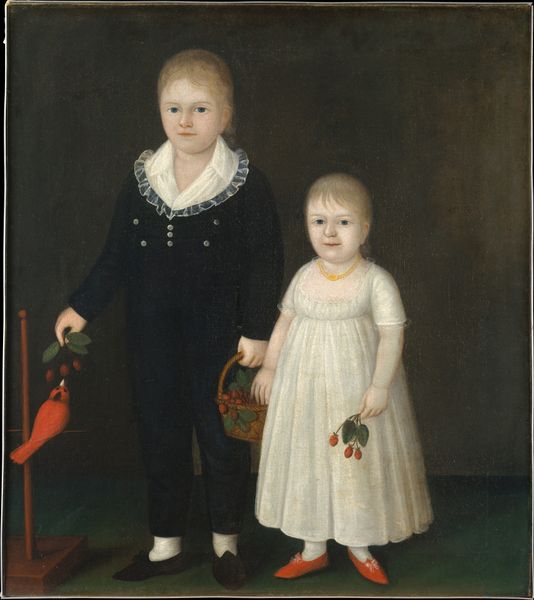
Double Portrait of Johann Georg von Holzhausen (1771-1846) and His Sister Henriette (1773-1834) c. 1775
0:00
0:00
Dimensions: 114.5 x 81.3 cm
Copyright: Public Domain
Curator: Here we have Heinrich Jacob Tischbein’s "Double Portrait of Johann Georg von Holzhausen and His Sister Henriette," painted around 1775. Editor: It strikes me immediately as…charming, but also slightly unsettling. The children are so formally posed, their expressions so serious, and the colours, particularly that insistent green, are almost aggressively vibrant. Curator: The portrait speaks to the growing prominence of the bourgeois class and their desire to emulate aristocratic customs through art patronage. Notice how Tischbein frames them within a landscaped setting, nodding to the Grand Tour's influence. The Holzhausen family, prominent in Frankfurt, commissioned this piece to visually cement their status and legacy. Editor: That's fascinating. I’m drawn to the details, like the feathered hat, the texture of the sister’s dress and the shiny coat of the dog – likely achieved through layers of glazes and careful handling of oil paint. This materiality reflects the labor investment into representing this family. Did the production and supply of those materials – those pigments – impact on the cost of the artwork? Curator: Absolutely. The pigments available then, the methods for mixing and applying them, reflect a sophisticated industry reliant on global trade and skilled artisans. This very picture is a testament to Frankfurt's wealth, linking into larger colonial trade networks. Editor: And the choice to include the dog? Its posture almost mirrors the children's, it adds a softness amidst that rigid formality. Curator: Dogs were popular status symbols in portraits, particularly those portraying children. They connoted loyalty and companionship but also signaled wealth, depending on the breed. It speaks to an intended audience, one acutely aware of social cues and signifiers. Editor: Seeing the work in person lets you observe brushstrokes – almost invisible brushstrokes. He wants you to think he achieved these surfaces effortlessly, disguising all of his own work within it. Curator: Tischbein's skill indeed allowed the family to fashion a persona for themselves and transmit values they believed were important to public view. It's more than just a painting; it is a statement. Editor: Thinking about materiality alongside its historical context gives another glimpse of eighteenth-century privilege and the hands that shaped its representation. Curator: Indeed. Art unveils layers of power dynamics at work within society and reveals, for example, the ambition inherent to image-making practices across time.
Comments
No comments
Be the first to comment and join the conversation on the ultimate creative platform.
